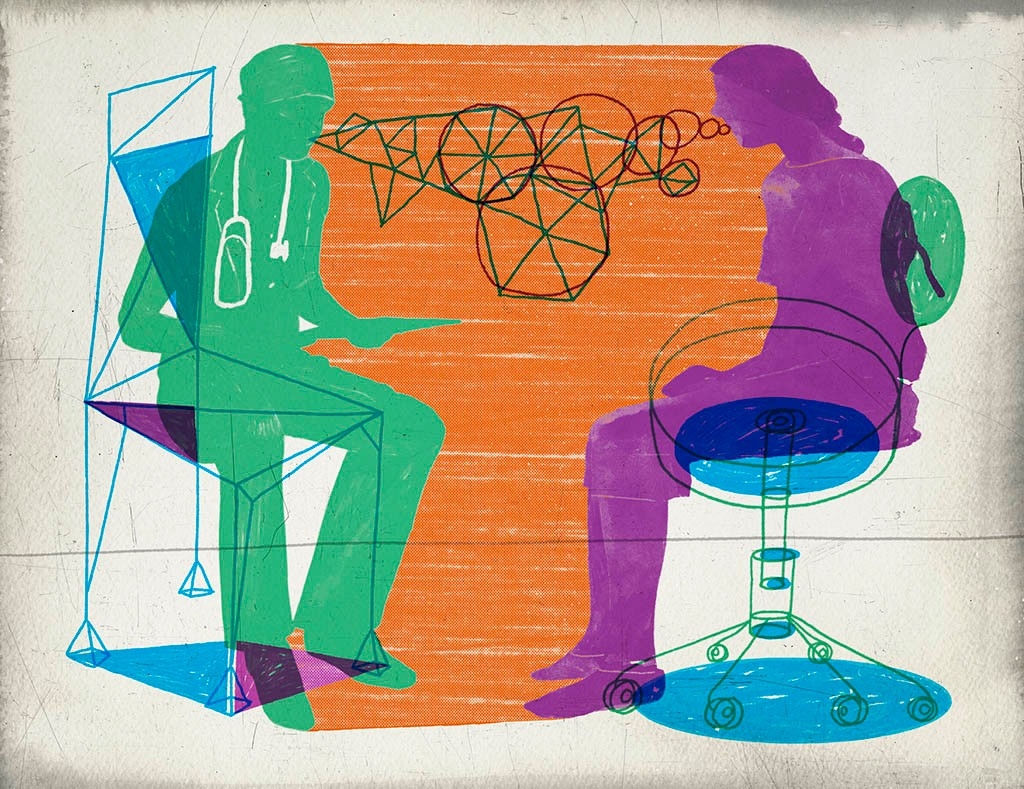Tough talks
Learning how to break bad news

As a doctor in the cardiovascular intensive care unit at Lucile Packard Children’s Hospital Stanford, Loren Sacks, MD, sometimes has to give parents awful news about their child’s health. It’s always heart-wrenching, but especially so when the child is dying.
“Part of what I love about working here is that we’re able and willing to try things that may actually let a kid live,” said Sacks, clinical assistant professor of pediatric cardiology at the Stanford School of Medicine. “But hand in hand with that is the acknowledgement that some of the things we do are not going to work.”
It’s difficult to tell parents there’s nothing more to be done to save their child, but Sacks takes to heart the responsibility of lifting “some minuscule amount of burden off of a mother and father.” That includes ensuring that the whole care team knows how to help families navigate through the worst experience of their lives.
“The way we communicate, the words we choose, the tone we use and the emotion we’re able to get across can help shape the family’s perspective and their experience,” said Marcos Mills, MD, a pediatric cardiology fellow who works with Sacks. “That is, to me, as powerful as anything else we do, because this is a time in this patient’s life that’s going to be remembered forever.”
Sacks, Mills and several other colleagues are working with the Menlo Park-based company STRIVR on a virtual reality program that allows doctors to practice giving people bad news while getting live feedback from educators like Sacks.
The project is one of several at Stanford that aim to improve doctors’ skill at communicating with patients.
A team that includes Sacks, Mills and Anne Dubin, MD, professor of pediatric electrophysiology, began creating the training in 2017. Trainees strap on a virtual reality headset and practice conversations with parent avatars. As the scenarios play out, background information and tips are displayed within the trainees’ sight line — such as case background, parents’ names, what the next part of the conversation should include and suggested responses to questions.
The team has developed three scenarios so far: telling parents their child has a terrible injury and won’t recover, telling a parent it’s time to disconnect an artificial heart pump that is keeping a child alive, and telling family members that a transplant team has decided their child can’t have a heart transplant. The reactions of the simulated parents vary by scenario.
“The way we communicate, the words we choose, the tone we use and the emotion we’re able to get across can help shape the family’s perspective and their experience. That is, to me, as powerful as anything else we do, because this is a time in this patient’s life that’s going to be remembered forever.”
During a pilot, 20 pediatric cardiology trainees tested the program: 95% of them said the simulation generated emotional stress similar to what they’d expect in a real patient encounter, and 98% said they’d be willing to try the program again.
Many also said they’d like to practice at home, without the in-person scrutiny of an instructor. Recording the sessions — including the language used, some visual cues, hand positions and body posture — allows participants and instructors to review the sessions for feedback.
The team plans to conduct a randomized trial to compare patient encounters for people who have standard fellowship training, the VR training or both.
Sacks hopes the program can help doctors comfort patients’ families in their grief.
“I can’t think of any more poignant validation of that desire than if a person whose family member has just passed away can still look at you and thank you for helping them with that,” Sacks said.

